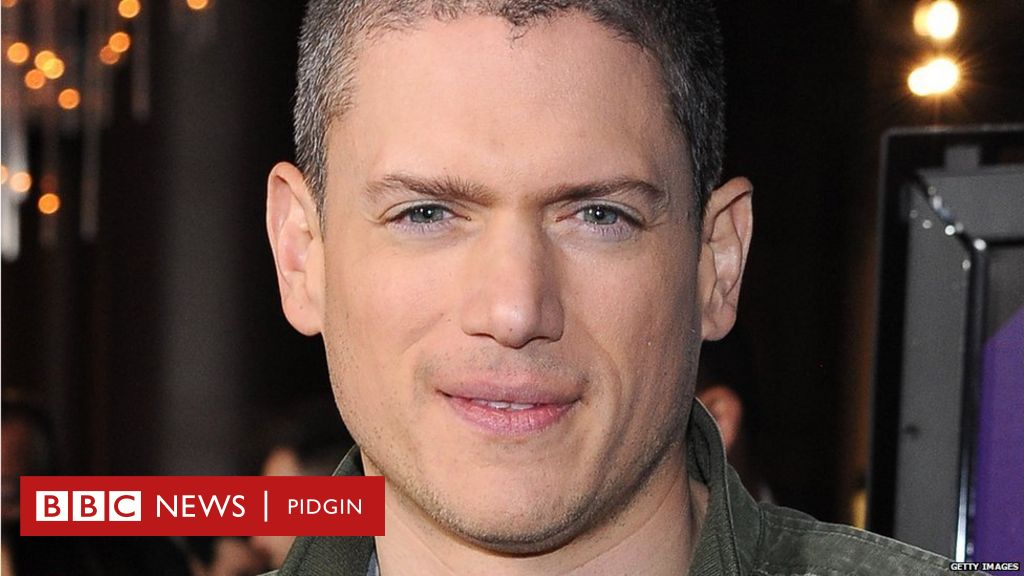Wentworth, one of Australia's most popular TV dramas, has sparked numerous discussions about its characters and storylines. Among the many conversations surrounding the series, the topic of whether Wentworth is gay has gained significant attention. In this article, we will explore the intricacies of the show, its characters, and how it addresses LGBTQ+ themes.
Wentworth, which premiered in 2013, is a modern take on the classic Prisoner series. Set in a women's correctional facility, the show delves into the lives of inmates and officers, showcasing their struggles, relationships, and personal growth. The series has consistently pushed boundaries, addressing sensitive issues such as identity, sexuality, and empowerment.
This article aims to provide a comprehensive analysis of the topic "Wentworth is gay," exploring the characters, their arcs, and the show's portrayal of LGBTQ+ themes. Whether you're a die-hard fan or a newcomer to the series, this article offers valuable insights into the world of Wentworth.
Read also:Cast On General Hospital Soap Opera A Comprehensive Guide To The Stars Behind The Screens
Table of Contents
- Introduction to Wentworth
- Key Characters in Wentworth
- LGBTQ+ Themes in Wentworth
- Bea Smith: The Iconic Character
- Doreen Malloy: A Complex Figure
- Statistics on LGBTQ+ Representation
- Fan Reactions to LGBTQ+ Storylines
- Criticism and Praise for Wentworth
- The Future of LGBTQ+ Storylines in Wentworth
- Conclusion
Introduction to Wentworth
Wentworth is a critically acclaimed Australian television series that has captivated audiences worldwide. The show revolves around the lives of women in a correctional facility, focusing on themes of power, identity, and relationships. One of the recurring debates among fans is whether certain characters or storylines suggest that Wentworth is gay.
The series has been praised for its bold storytelling and willingness to tackle complex social issues. By incorporating LGBTQ+ themes, Wentworth has contributed to a more inclusive representation of diverse identities in media. This section provides an overview of the show's background and its significance in the entertainment industry.
Key Characters in Wentworth
Wentworth features a diverse cast of characters, each with their own unique storylines and arcs. Below is a list of some of the most prominent characters:
- Bea Smith: The protagonist of the series, known for her resilience and leadership.
- Doreen Malloy: A powerful antagonist who often clashes with Bea.
- Franky Doyle: A charismatic inmate with a mysterious past.
- Joan Ferguson: The enigmatic governor of the prison.
LGBTQ+ Themes in Wentworth
Wentworth has been lauded for its exploration of LGBTQ+ themes, reflecting the realities faced by individuals within the community. The show portrays relationships and identities with sensitivity and authenticity, challenging stereotypes and promoting acceptance.
Through its characters and storylines, Wentworth addresses topics such as:
- Same-sex relationships
- Gender identity
- Intersectionality and diversity
Bea Smith: The Iconic Character
Bea Smith, portrayed by actress Danielle Cormack, is one of the central figures in Wentworth. Her character arc explores themes of leadership, vulnerability, and personal growth. While Bea's sexuality is not explicitly defined, her relationships and interactions with other characters have sparked discussions about her identity.
Read also:What Happened To Jfk Jrs Voice A Comprehensive Analysis
Biodata of Bea Smith
| Name | Bea Smith |
|---|---|
| Portrayed By | Danielle Cormack |
| Occupation | Inmate |
| Notable Traits | Strong-willed, intelligent, and empathetic |
Doreen Malloy: A Complex Figure
Doreen Malloy, played by Robyn Nevin, is another pivotal character in Wentworth. Known for her cunning and manipulative nature, Doreen's relationships with other inmates add depth to the show's narrative. While her sexuality is not explicitly labeled, her interactions with characters like Bea Smith have fueled speculation about her identity.
Exploring Doreen's Storyline
Doreen's character arc highlights themes of power dynamics and personal transformation. Her relationships with other inmates, particularly those involving same-sex attraction, contribute to the show's rich tapestry of LGBTQ+ representation.
Statistics on LGBTQ+ Representation
According to a report by GLAAD, LGBTQ+ representation in television has steadily increased over the years. In 2022, approximately 11.9% of regular characters on primetime scripted series identified as LGBTQ+. Shows like Wentworth have played a significant role in this progress, offering nuanced portrayals of diverse identities.
Source: GLAAD
Fan Reactions to LGBTQ+ Storylines
Fans of Wentworth have expressed a range of emotions regarding the show's LGBTQ+ storylines. Many applaud the series for its authentic representation, while others have raised concerns about certain portrayals. Social media platforms have become hubs for discussions, with fans sharing their thoughts and experiences.
Common Fan Opinions
- Appreciation for diverse character arcs
- Criticism of certain narrative choices
- Requests for more inclusive representation
Criticism and Praise for Wentworth
Like any television series, Wentworth has received both praise and criticism for its handling of LGBTQ+ themes. Critics argue that some storylines rely on stereotypes or lack depth, while supporters commend the show for its groundbreaking approach to representation.
It is essential for creators to listen to feedback and continuously improve their storytelling to ensure that all voices are heard and respected.
Improving Representation
To enhance LGBTQ+ representation, Wentworth could consider:
- Incorporating more diverse storylines
- Engaging with the LGBTQ+ community for input
- Addressing intersectional issues such as race and disability
The Future of LGBTQ+ Storylines in Wentworth
As Wentworth continues to evolve, there is immense potential for further exploration of LGBTQ+ themes. By prioritizing authenticity and inclusivity, the show can set a new standard for representation in television.
Future storylines could focus on:
- Non-binary and transgender characters
- Intergenerational relationships
- Challenges faced by LGBTQ+ individuals in prison
Conclusion
In conclusion, the topic of whether Wentworth is gay highlights the show's commitment to exploring diverse identities and relationships. Through its characters and storylines, Wentworth has become a beacon of LGBTQ+ representation in television. As the series progresses, it has the opportunity to further amplify underrepresented voices and promote acceptance.
We encourage readers to engage with the show critically, sharing their thoughts and experiences in the comments section. Additionally, consider exploring other articles on our site for more insights into LGBTQ+ themes in media.
Thank you for reading, and we hope this article has provided valuable information and food for thought. If you enjoyed this piece, please share it with others and join the conversation!


